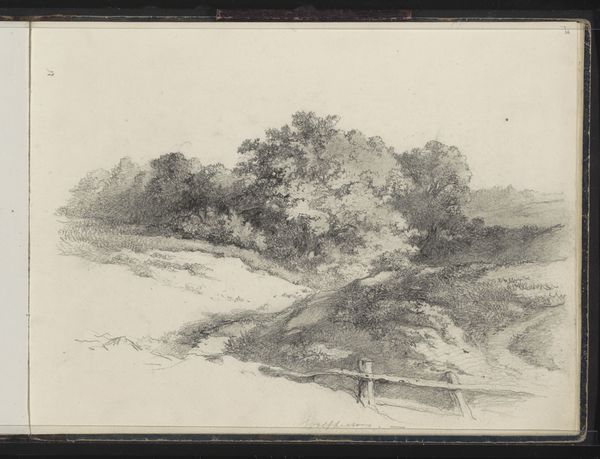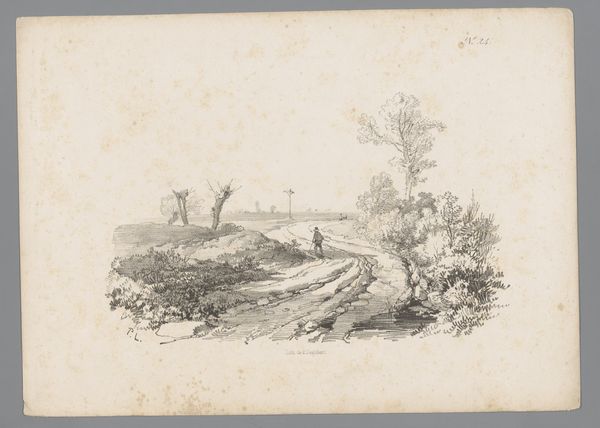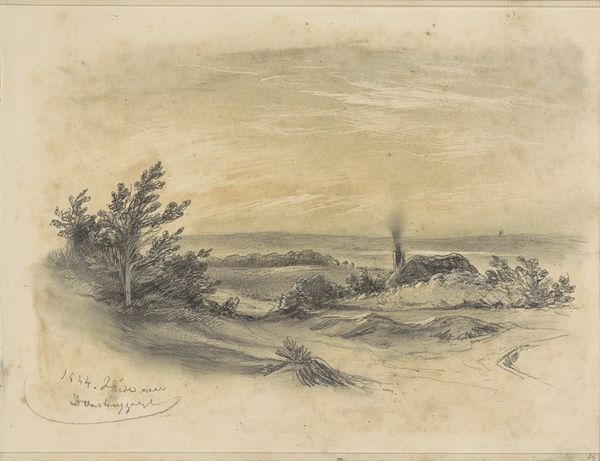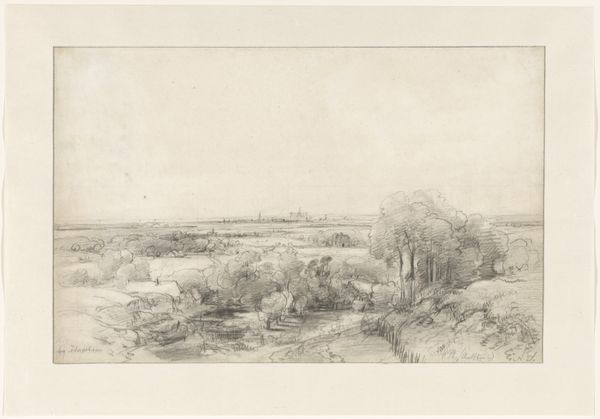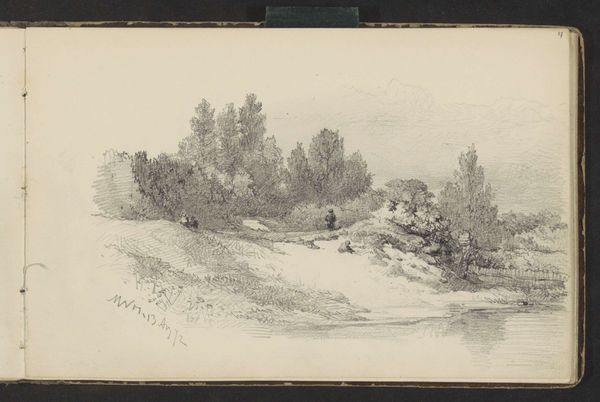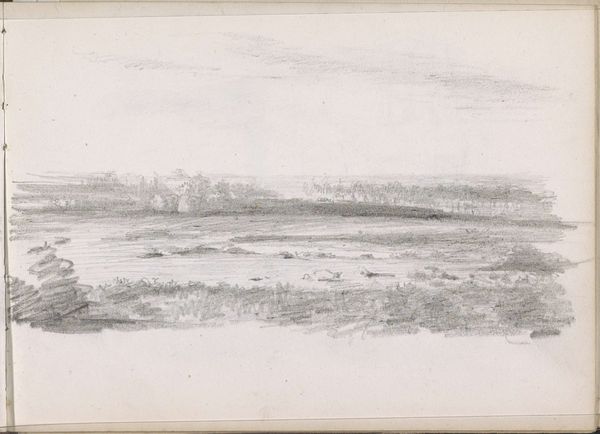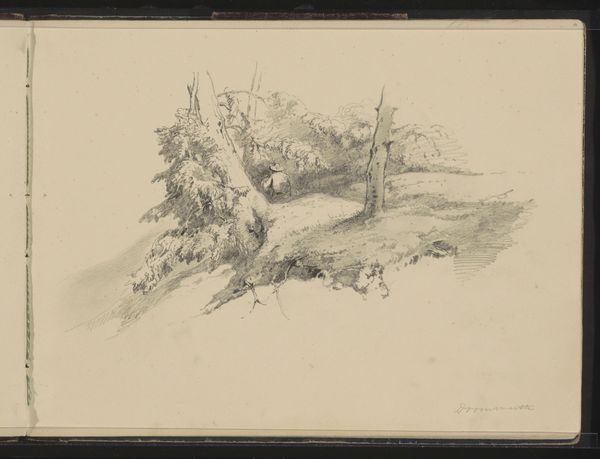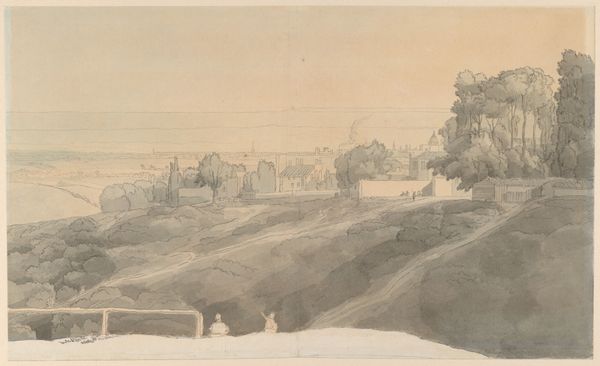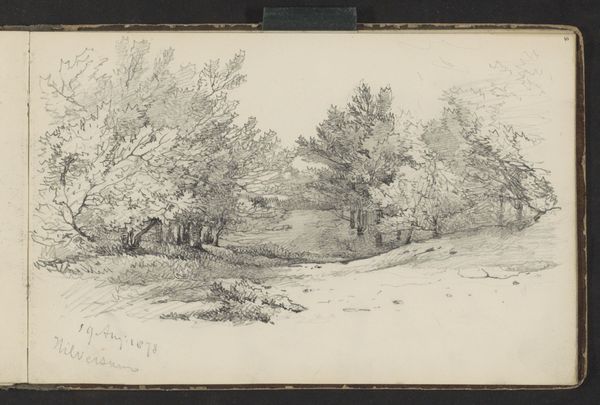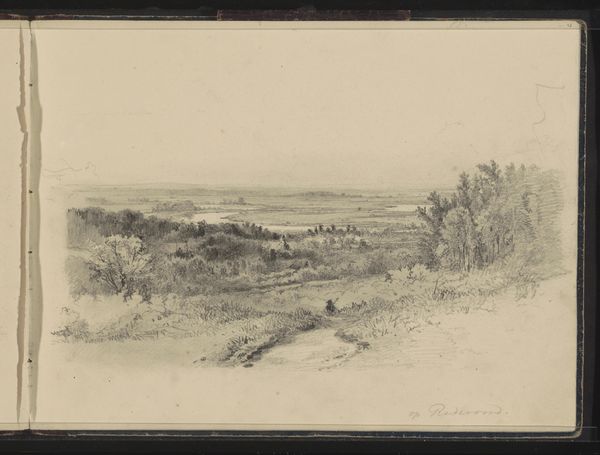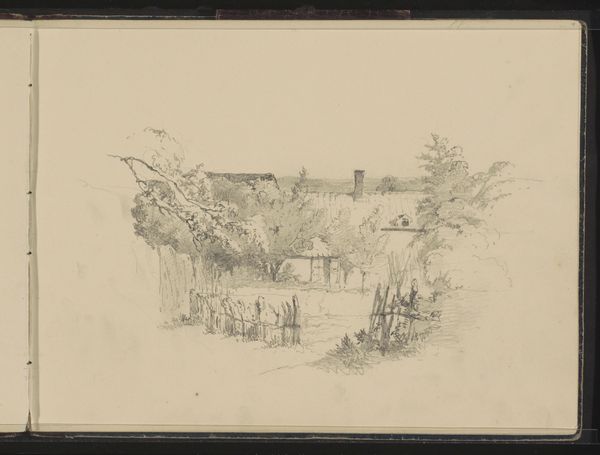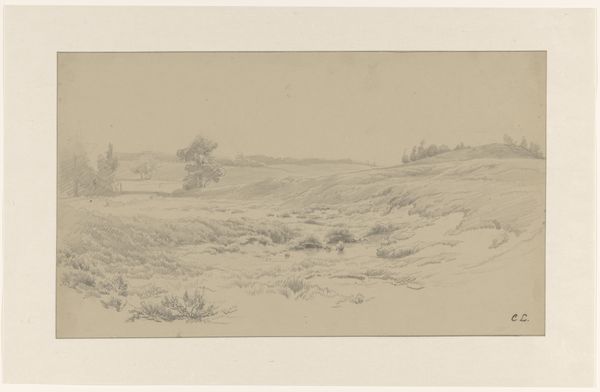
Copyright: Rijks Museum: Open Domain
Curator: This graphite drawing by Maria Vos, created around 1864-1865, offers a glimpse of "Figure with a Dog on the Rhederoord Estate." Editor: My first impression is one of stillness and solitude. There’s a certain melancholic beauty to this landscape. Curator: It's evocative, isn't it? Vos captures a vast, open space. The tiny figure with a dog emphasizes our small place within the wider world. What symbols or cultural undercurrents do you detect? Editor: I'm drawn to the idea of land ownership, even if subconsciously represented. The 'estate' inherently implies a certain social stratification, doesn’t it? The lone figure possibly alludes to those excluded, to an almost existential wandering? It contrasts so sharply with that steeple on the horizon, a marker of established order. Curator: That’s an astute reading. The spire indeed speaks to institutional authority and structure. However, consider also the role of the dog—a faithful companion—serving as a visual representation of loyalty, guiding the wanderer within a potentially dangerous space. The landscape then is not just one of privilege, but a place of inner turmoil. Editor: I agree, the companionship subverts what could be an allegory for total alienation. And the detail in the trees – they're sketched with a realism that is somehow both precise and vulnerable. What interests you most about the rendering itself? Curator: Precisely, the way she employs light and shadow with delicate strokes gives the scene an almost dreamlike atmosphere. In my view it pulls the viewer to acknowledge how internal perception renders external space a territory for psychological exploration. I think that speaks volumes for how Romanticism manifests beyond painting. Editor: It’s interesting you see psychological elements in this, since the landscape trend generally depicts the outer natural realm! Curator: Well, beyond the overt symbols, the very act of choosing such a composition—the muted tones, the implied journey— hints at the deeper human experience reflected through landscape. Editor: Absolutely, thinking about it through the context of land and social dynamics really adds a powerful layer of historical understanding here. Curator: Indeed. Vos encourages us to contemplate not only our surroundings but how our surroundings mirror our internal states. Editor: Thank you. Considering that is making me see the piece differently, even after numerous looks.
Comments
No comments
Be the first to comment and join the conversation on the ultimate creative platform.
